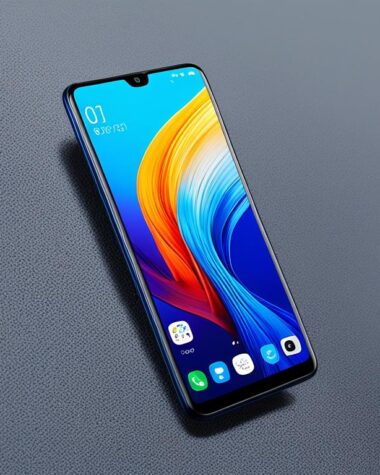In a world where wires seem to tangle and clutter every corner of our lives, the advent of wireless charging has brought a glimmer of convenience and freedom.
Picture this: you come home after a long day, and instead of searching for the right cable to plug in your device, you simply place it on a sleek pad, and voila! It starts charging wirelessly.
But have you ever wondered how this magical technology actually works?
In this article, we’ll delve into the intricacies of this futuristic technology, uncovering the science behind it, exploring its applications, and peering into its promising future.
The Basics of Wireless Charging
To understand wireless charging, let’s start with the basics.
It, also known as inductive charging, is a technology that enables the transfer of electrical energy from a power source to a device without the need for physical connectors or cables.
Instead, it relies on the principles of electromagnetic fields and magnetic resonance.
At the heart of wireless charging are two key components: the transmitter, often in the form of a charging pad, and the receiver, integrated into the device being charged.
These components work in tandem, creating an electromagnetic connection through a process known as inductive coupling.
Inductive Charging: The Dance of Energy
Inductive charging revolves around the fascinating concept of electromagnetic fields and their ability to transfer energy.
It begins with the transmitter coil, located within the charging pad.
When electricity flows through this coil, it generates an alternating magnetic field around it.
On the receiving end, the device being charged is equipped with a receiver coil.
This coil is designed to capture the magnetic field generated by the transmitter coil and convert it back into electrical energy.
The captured energy is then directed to the device’s battery, replenishing its power reserves.
However, to ensure efficient energy transfer, proper alignment between the transmitter and receiver coils is crucial.
Misalignment can lead to reduced charging efficiency or even a complete failure to charge.
Manufacturers often integrate alignment mechanisms or visual cues to help users position their devices correctly on the charging pad.
The Role of Qi Wireless Charging Standard
While various wireless charging technologies exist, the Qi (pronounced “chee”) wireless charging standard has gained widespread recognition and adoption.
Developed by the Wireless Power Consortium, Qi serves as a unifying force, standardizing wireless charging across different devices and brands.
Qi-compatible devices can communicate and interact seamlessly with Qi-certified charging pads, ensuring interoperability.
This means that a Qi-enabled smartphone can be charged using any Qi-compatible charging pad, regardless of the brand.
This standardization has significantly contributed to the growing popularity and acceptance of inductive charging in recent years.
Exploring Other Wireless Charging Technologies
While inductive charging remains the dominant form of wireless charging, other exciting technologies are emerging on the horizon.
- Resonant Inductive Coupling:
This technology takes the principles of inductive charging further by using resonant circuits.
It allows for greater distances between the transmitter and receiver coils, enabling charging even when the devices are not in direct contact.
- Radio Frequency (RF) Charging:
RF charging employs radio waves to transfer energy.
It eliminates the need for physical contact between the charger and the device, offering the potential for true charging without wires over larger distances.
- Power-at-a-Distance (PaaD) Technologies:
PaaD technologies aim to revolutionize the way we think about wireless charging by enabling devices to charge while in use or in motion.
Researchers are exploring methods such as using ambient RF energy or infrared lasers to transmit power wirelessly.
Advantages and Challenges
The amazing technology brings a multitude of advantages, but it’s not without its limitations.
- Convenience and Ease of Use:
It simplifies our lives by eliminating the need for cables and connectors.
It offers a seamless charging experience, making it as easy as placing your device on a charging pad.
- Reduction in Cable Clutter:
With inductive charging, the days of tangled cords and cluttered desks may soon be behind us.
The absence of cables not only promotes a cleaner and more organized environment but also reduces the risk of tripping hazards.
- Compatibility Concerns:
Although the Qi standard has greatly improved compatibility, some devices may not be equipped with wireless charging capabilities.
In such cases, users may need to purchase additional accessories or use specialized cases to enable wireless charging.
- Efficiency and Charging Speeds:
Wireless charging, compared to traditional wired charging, can be slightly less efficient. Energy loss occurs during the conversion and transmission process.
However, advancements in technology have resulted in improved efficiency rates, narrowing the gap between wired and wireless charging speeds.
- Impact on Battery Lifespan:
Some users have expressed concerns about the impact of wireless charging on battery lifespan.
Continuous charging, even when the battery is already full, could potentially degrade its longevity.
However, modern devices and charging systems are designed with algorithms and safeguards to prevent overcharging and minimize any negative effects.
Future Trends and Developments
The future of wireless charging is brimming with exciting possibilities and advancements.
As technology continues to evolve, we can anticipate significant improvements in inductive charging efficiency and speed.
Researchers are exploring new materials, such as gallium nitride (GaN) and silicon carbide (SiC), which could lead to more efficient charging systems.
Moreover, this technology is expected to extend its reach beyond consumer electronics.
Industries like automotive, healthcare, and smart home systems are actively incorporating wireless charging technology into their products, fostering seamless integration into our daily lives.
Looking ahead, longer-distance wireless charging is an area of intense research.
Imagine walking into a room and having your devices automatically charge wirelessly without any manual intervention.
Such advancements hold the promise of transforming our surroundings into intelligent charging environments.
Final Words on How Wireless Charging Works
Wireless charging has revolutionized the way we power our devices, providing us with a cable-free charging experience.
By harnessing the principles of electromagnetic fields and magnetic resonance, wireless charging technologies like Qi have paved the way for convenience and simplicity.
As the technology continues to mature, we can expect faster charging speeds, improved efficiency, and wider adoption across various industries.
The dream of a world without tangled cables is becoming a reality, as wireless charging takes center stage in the tech industry’s vision for the future.
So, embrace the wireless revolution and bid farewell to the hassle of cords—your devices will thank you!
We earlier discussed effective strategies and measures to help you navigate through the challenges of a devastating rainstorm and subsequent flooding.








